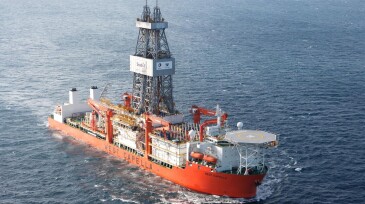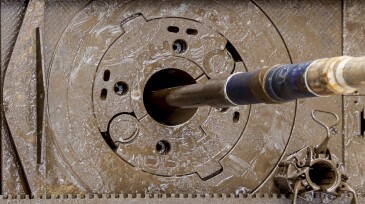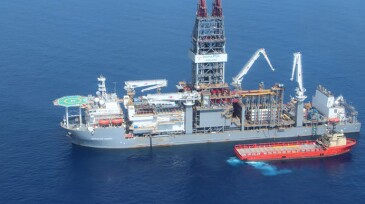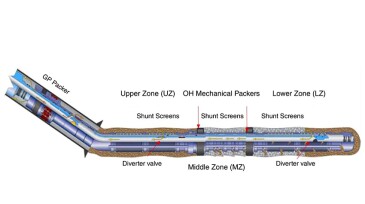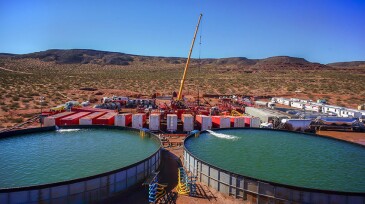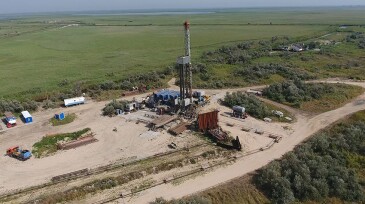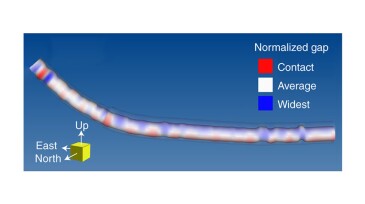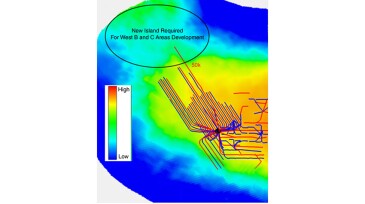Drilling
This paper presents a study of trapped-torque incidents during drillpipe connection, highlighting contributing factors and root causes and proposing prevention and mitigation measures for these transient events.
The capability of modern wellbore surveying to increase asset value through improved subsurface modeling and completion-equipment placement is being overlooked by managers of operating companies.
In this study, a method was developed to analyze the effects of drilling through transitions on bit-cutting structures and construct an ideal drilling strategy using a detailed drilling model.
-
The latest successful drilling campaign brings Suriname’s discovered resources to over 2.4 billion bbl of oil, according to Wood Mackenzie.
-
The contractor sells rigs and Qatar JV stake to Gulf Drilling International in $338 million deal.
-
Computational fluid dynamics modeling is used to gain better understanding of filter-cake formation in inclined and vertical well drilling operations under elevated temperature and pressure, highlighting the importance of controlling fluid invasion to optimize drilling performance.
-
Drillships Deepwater Asgard and Deepwater Atlas have fresh US Gulf Mexico campaigns upcoming that will earn the driller more than $500,000 per day.
-
This paper presents the completion strategy implemented in an intelligent well completed in Malaysian deepwater Block K.
-
This paper describes the technical challenges of drilling and running casing in superlaterals in the Vaca Muerta unconventional play.
-
As technology continue to evolve and reservoirs become more challenging to access, the drilling industry is further improving its efficiency and derisking operations through the use of artificial intelligence, lighter and stronger pipes, and sophisticated data analytics.
-
This paper presents laboratory testing and application of a resin-cement system designed to be placed as a tail slurry to provide enhanced mechanical properties compared with a conventional slurry.
-
This paper describes a foamed cement solution designed and implemented to cement shallow intermediate casing strings in a heavy oil play in Northeast Alberta.
-
This paper describes the engineering design and operational execution practices that supported setting of a new extended-reach world record in a mature carbonate field offshore Abu Dhabi.





